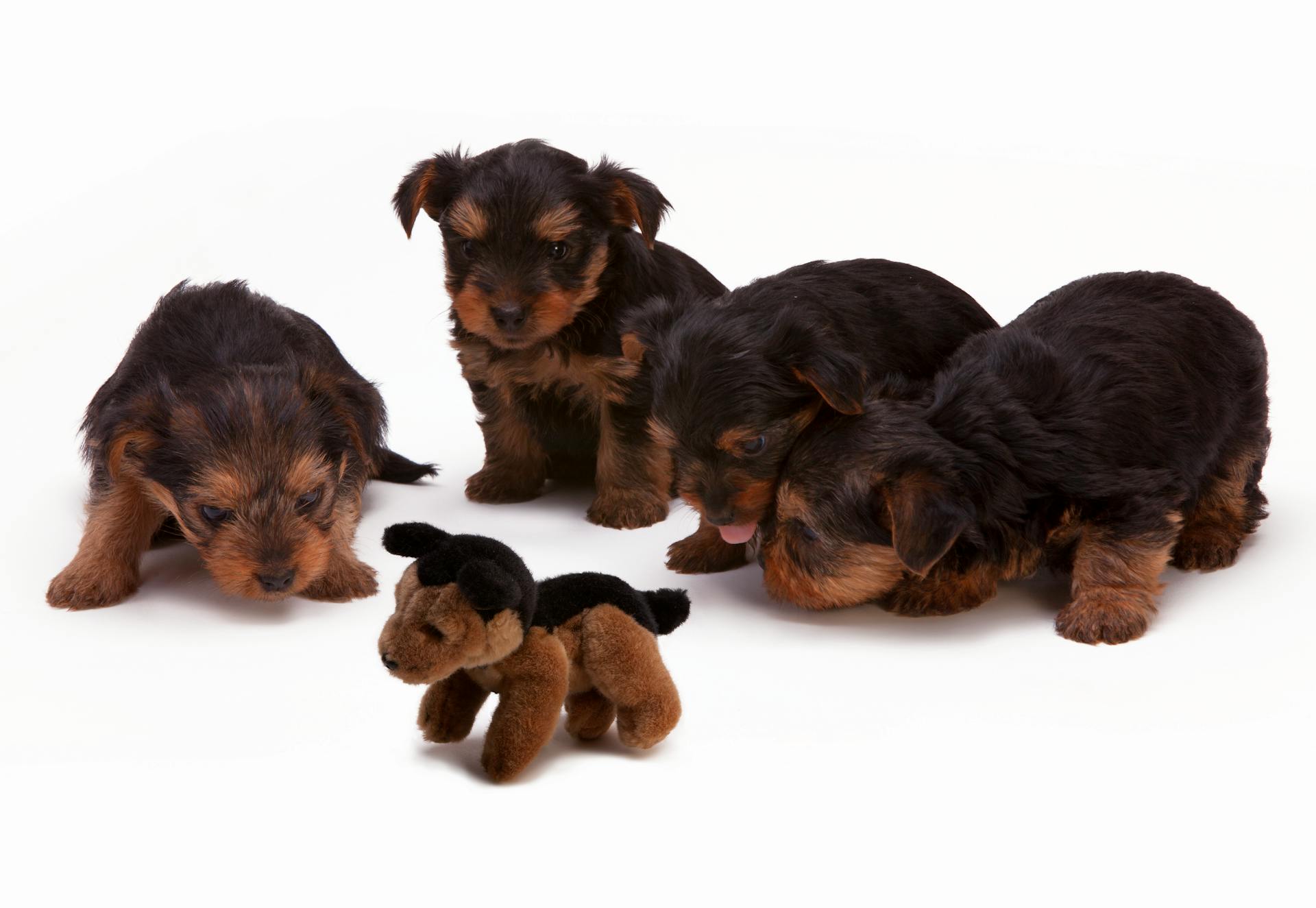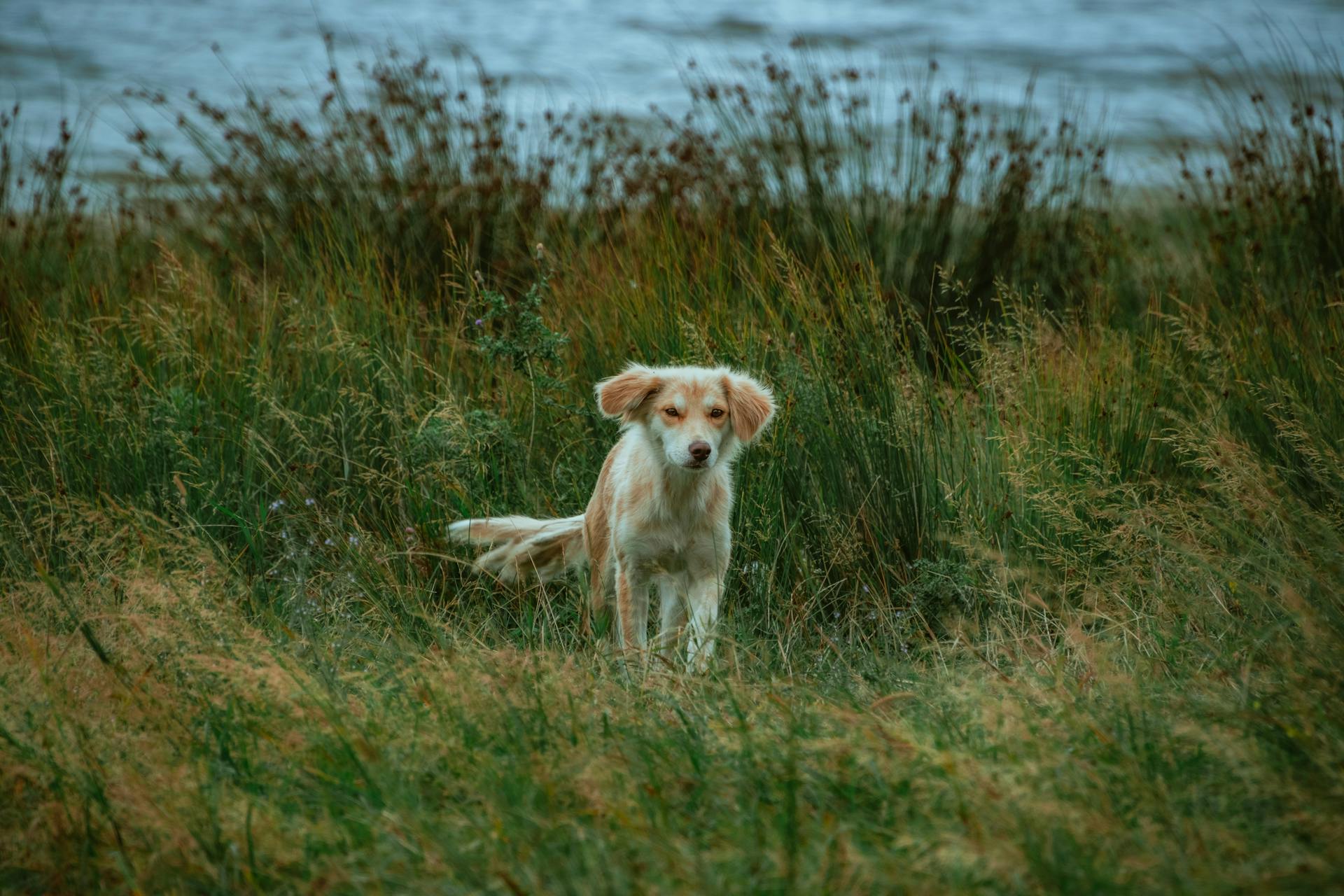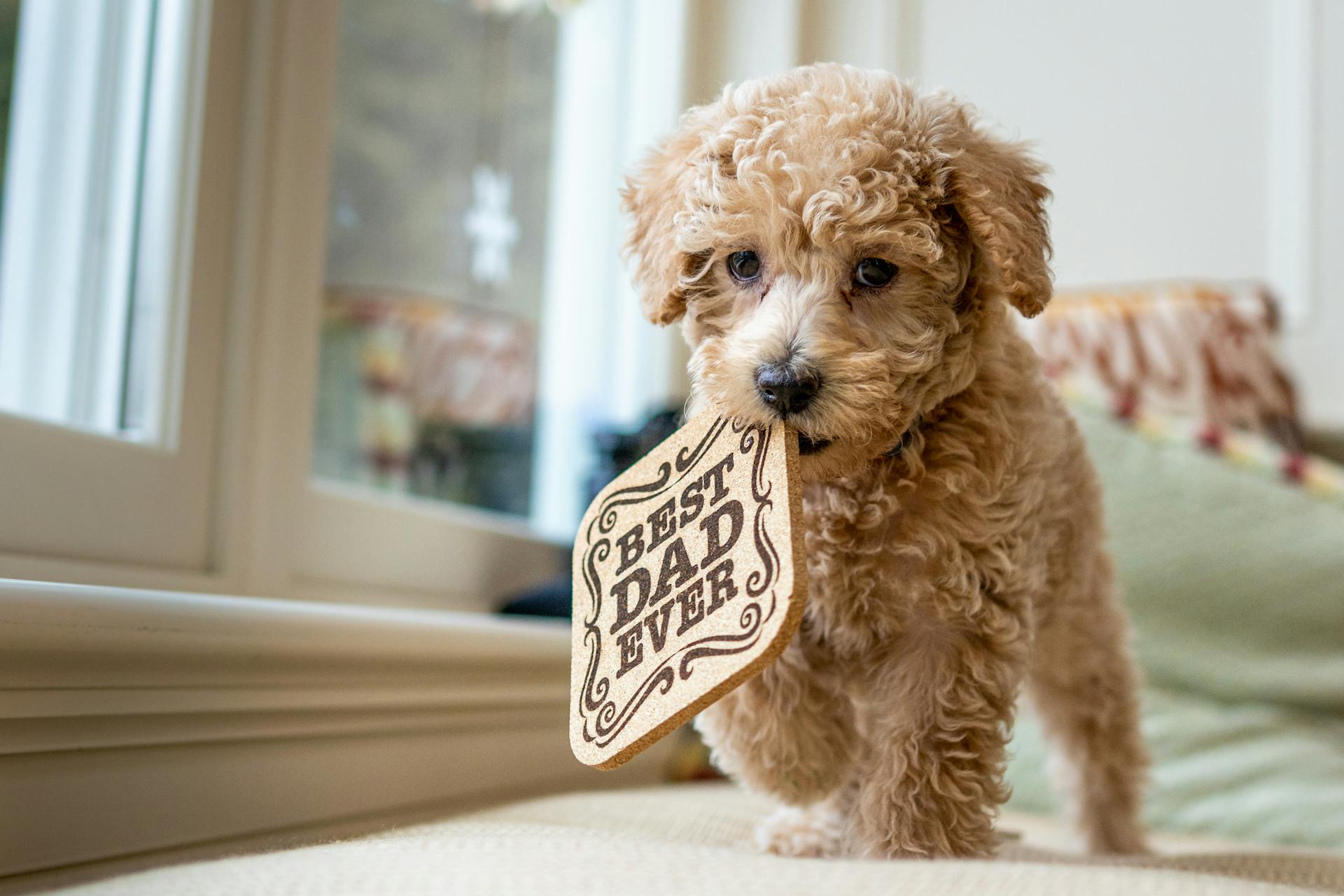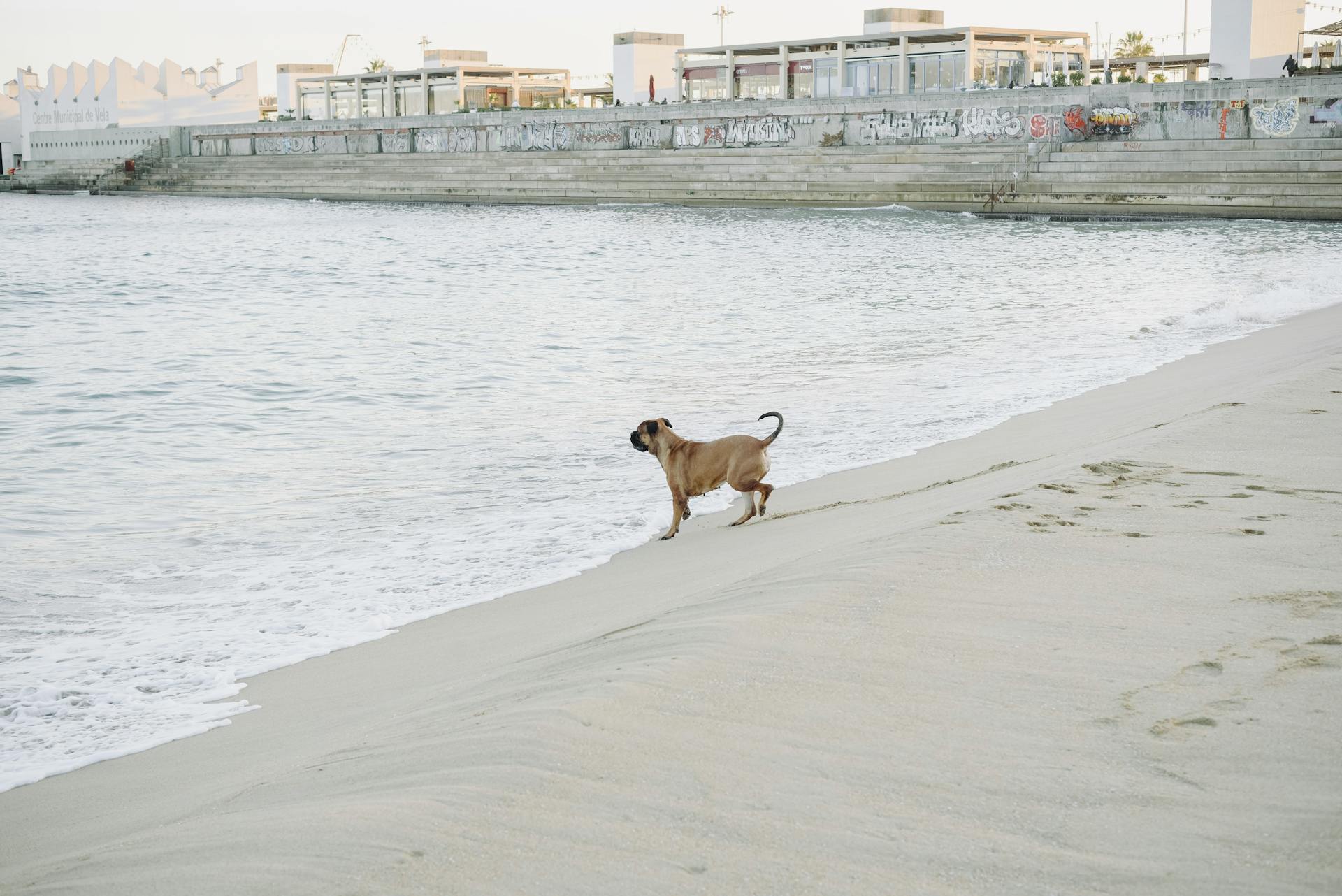
Bullmastiff breeders are passionate about sharing their knowledge with potential owners to ensure a harmonious match between dog and family. They're a large and powerful breed, so it's essential to consider the space and exercise needs of a bullmastiff.
Bullmastiffs are generally quiet dogs, but they do need regular exercise to stay happy and healthy. They're not high-maintenance, but they do require daily walks and playtime.
Bullmastiff breeders recommend that families with young children consider the age and energy level of their children when deciding if a bullmastiff is the right fit. This will help ensure a smooth transition for both the dog and the family.
A well-tempered bullmastiff is a loyal companion and loving friend to the right family.
Bullmastiff Breed Information
Bullmastiffs generally have a calm temperament, which makes them a great addition to many families. They're not typically anxious or fearful, but they can be protective of their home and family when meeting new people and animals.
Training a Bullmastiff is relatively easy, especially when started at a young age. They're intelligent dogs that are quick to learn during training classes and can excel in various classes, including puppy classes, obedience, and agility.
If you're considering bringing a Bullmastiff into your family, be prepared to start training early to prevent any unwanted behaviors from developing.
Expand your knowledge: Bullmastiff Training
Appearance
The Bullmastiff is a massive, powerfully built dog, but it's not a cumbersome animal. Its shoulders are muscular and slightly sloping, while the hindquarters are broad and well proportioned.
Their head is large and broad, with a wrinkled appearance and a broad, deep muzzle that's usually a darker color than the body. The wide nose is black and has large nostrils.
The Bullmastiff's eyes are a deep dark hazel color, and they have an alert expression. They're medium-sized, which is just right for a dog of this size.
Their V-shaped ears are set high and wide, and are carried close to the cheeks, giving the head a square boxy appearance. The ears are a great indicator of their overall health and should be checked regularly.
The Bullmastiff's neck is slightly arched, muscular, and strong, which helps them carry their massive head. Their tail is held high and is thicker at the base while tapering to the tip, and it's either straight or curved and reaches the hocks.
Their legs are strong, with large paws that support their weight, which is essential for a dog of this size. A straight back that's level between the withers and loin, and a short, dense coat that's slightly rough to the touch, completes the picture of this impressive dog.
Size
The Bullmastiff is a large breed of dog. A male Bullmastiff can grow up to 25 to 27 inches in height.
Their size is impressive, and they can weigh anywhere from 110 to 130 pounds. This makes them a sturdy and powerful breed.
Females, on the other hand, are slightly smaller, reaching heights of 24 to 26 inches. Their weight range is also slightly lower, typically between 100 to 120 pounds.
Owning a Bullmastiff
Owning a Bullmastiff requires some consideration. They are low-energy dogs that are content with a couple of short walks each day.
To ensure their well-being, it's essential to provide proper socialization, as they may become aggressive towards other animals if not exposed to them early on. They should live indoors with their owners, as they are prone to heat exhaustion and heatstroke in hot or humid weather.
Bullmastiffs are good with children, but their large size can be a concern, especially with toddlers. They can unintentionally knock over or step on them, so careful observation is necessary for their well-being.
In terms of grooming, Bullmastiffs shed very little and require minimal grooming. However, they do drool and can be gassy, so if you're bothered by cleaning up drool, this breed may not be suitable for you.
Curious to learn more? Check out: Bullmastiff Slobber
About Us
Owning a Bullmastiff can be a rewarding experience, but it's essential to understand the breed's origins. The American Kennel Club (AKC) is one of the most well-known organizations for dog enthusiasts, and they have a rich history dating back to 1884.
The AKC's mission is to "uphold the integrity of its registry, promote the sport of purebred dogs, and breed for type and function." This mission is reflected in their breeding programs and events.
If you're new to dog ownership, it's crucial to research the breed's needs and characteristics. Bullmastiffs are known for their loyalty and protective nature, making them excellent family pets.
The AKC has a vast library and archives of dog-related information, including breed standards, health information, and training resources. This can be a valuable resource for new owners.
Here are some key facts about the AKC's governance and leadership:
- AKC Board of Directors: Oversees the organization's overall strategy and direction.
- Executive Officers: Responsible for the day-to-day operations of the AKC.
Understanding the AKC's structure and leadership can help you navigate the world of dog ownership and breeding.
Prospective Owners
As a prospective owner of a Bullmastiff, it's essential to consider their unique needs and characteristics. They can thrive in apartments or condos, but they do shed very little and require minimal grooming.
To ensure a smooth transition for both you and your new furry friend, it's crucial to find a responsible breeder. A good breeder will provide you with a healthy puppy that's well-socialized and has a good temperament.
Bullmastiffs are low-energy dogs that are content with a couple of short walks each day. They can do well in families with working parents, but puppies may need someone to let them out for potty breaks.
These mellow dogs are prone to heat exhaustion and heatstroke in hot or humid weather, so it's vital to keep them indoors with their owners. They also drool and can be gassy, so if you're bothered by cleaning up drool, this breed may not be suitable for you.
A Bullmastiff's size can be a challenge, especially around small children. They can unintentionally knock over or step on toddlers due to their size, so it's essential to supervise interactions between the dog and young children.
Here are some key things to consider when choosing a Bullmastiff:
- They are good with children, but require supervision due to their size
- They can be aggressive towards other animals if not properly socialized
- They need early and consistent training to control unwanted aggression and stubbornness
- They require a strong owner who can keep them in line
- They can be destructive if left alone too much or bored
Overall, owning a Bullmastiff requires patience, love, and a firm hand. With the right care and attention, they can be wonderful, caring, and loyal companions who'll gladly risk their life to defend yours.
Health and Care
Bullmastiffs are generally healthy, but like all breeds, they can be prone to certain health conditions. Regular check-ups and early treatment are crucial to maintaining their well-being.
Hip Dysplasia is a heritable condition where the thighbone doesn't fit snugly into the hip joint, leading to pain and lameness in the rear legs. Elbow Dysplasia is common in large-breed dogs and can cause painful lameness due to joint laxity.
Bullmastiffs need daily exercise, including long walks and playing within a fenced-in yard. They do not make good running companions, however, because they don’t have the stamina to run long distances.
To ensure a healthy and happy life for your Bullmastiff, consider the following:
- Provide a fenced-in yard for exercise and playtime.
- Avoid exercise during the hottest parts of the day to prevent heat exhaustion and heatstroke.
- Keep them indoors during hot or humid weather.
- Provide shade and fresh water when they're outdoors.
Early training and socialization are essential for this breed, as they can become strong-willed and more difficult to train as they get older. Positive reinforcement is the best approach in training a Bullmastiff, as they respond well to encouragement but need a confident trainer.
Health Needs

Regular check-ups and early treatment are crucial to maintaining the well-being of Bullmastiffs and ensuring they lead healthy and happy lives.
Bullmastiffs are generally healthy, but like all breeds, they can be prone to certain health conditions. Research reputable breeders to minimize the risk of inherited health issues.
Some common health issues in Bullmastiffs include hip dysplasia, elbow dysplasia, and hypothyroidism. These conditions can cause pain, lameness, and other symptoms if left untreated.
Hip dysplasia is a heritable condition where the thighbone doesn't fit snugly into the hip joint, leading to pain and lameness in the rear legs. Elbow dysplasia is common in large-breed dogs and can cause painful lameness due to joint laxity.
Hypothyroidism results from a deficiency of thyroid hormone, leading to various signs like infertility, obesity, and mental dullness. Regular check-ups with your veterinarian can help detect these conditions early on.
Here are some common health issues in Bullmastiffs, along with their symptoms:
Dilated cardiomyopathy (DCM) is an acquired heart disease in Bullmastiffs that can cause symptoms like rapid heart rate, cough, and difficulty breathing. Regular check-ups with your veterinarian can help detect this condition early on.
Caring for a
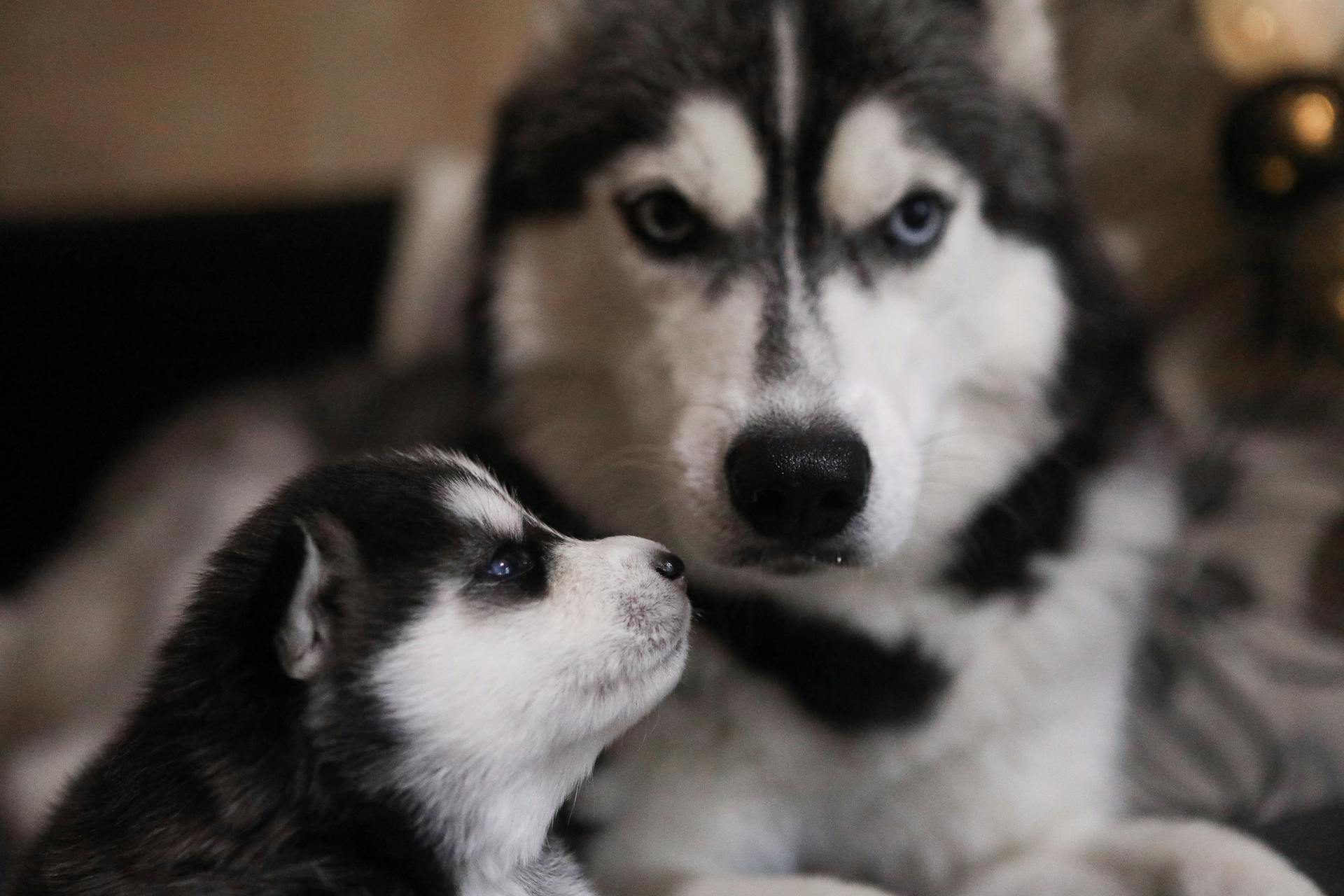
Caring for a Bullmastiff requires attention to their exercise needs, as they need daily exercise including long walks and playing within a fenced-in yard. This helps them stay happy and healthy.
Bullmastiffs are prone to heat exhaustion and heatstroke due to their short muzzle, so it's essential to avoid exercise during the hottest parts of the day and keep them indoors during hot or humid weather.
A Bullmastiff's strength and size mean they can easily knock people and children over if they lack training, so training and socialization are crucial from an early age.
To train a Bullmastiff, it's best to use positive reinforcement, as they respond well to encouragement, and to enroll them in puppy socialization classes to help them interact with other dogs and people.
Here are some essential commands to teach your Bullmastiff:
- Respond to specific commands, including “sit” and “stay”
- Walk well on a leash
- Remain calm around other dogs, adults, and children
Building a strong bond with your Bullmastiff through love, patience, and consistent training will ensure a harmonious and rewarding relationship with this majestic breed.
Featured Images: pexels.com
